

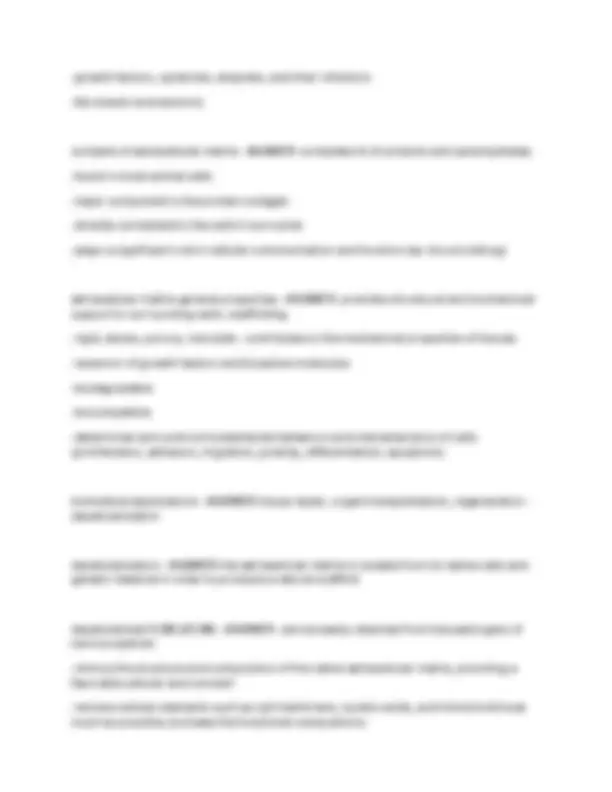


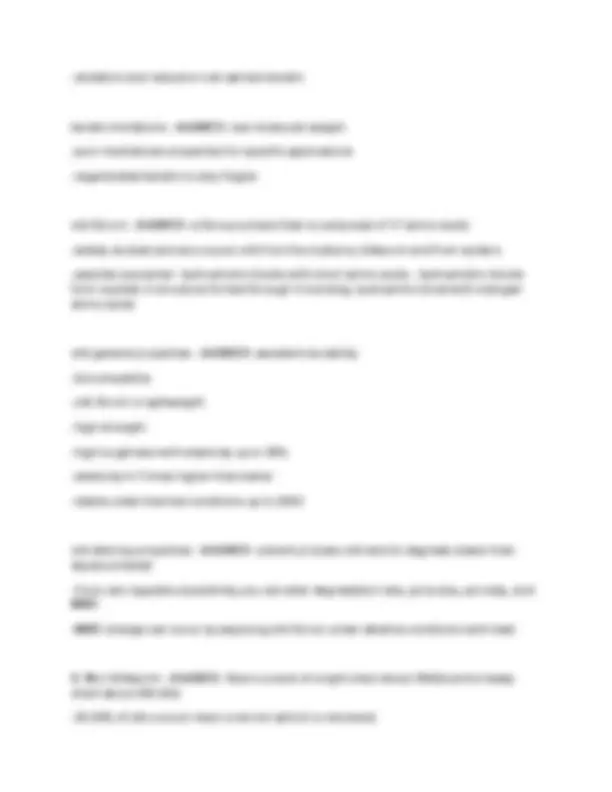
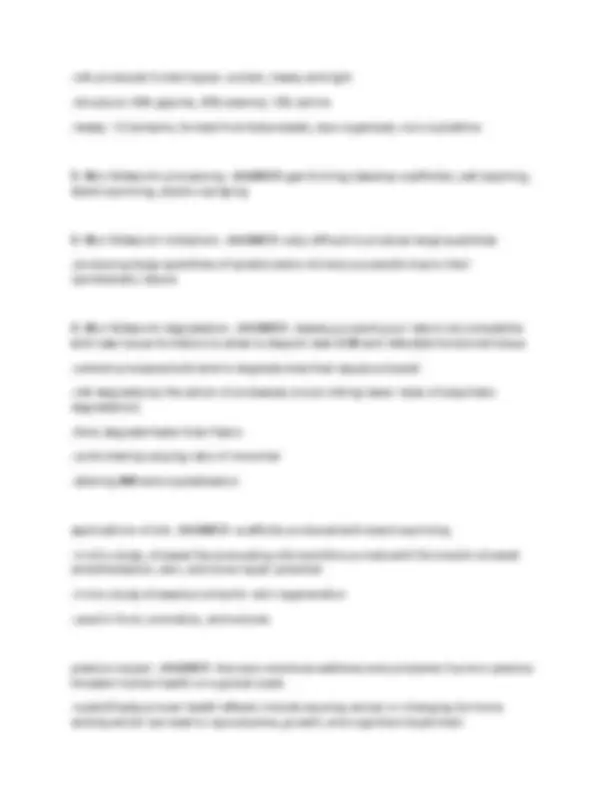
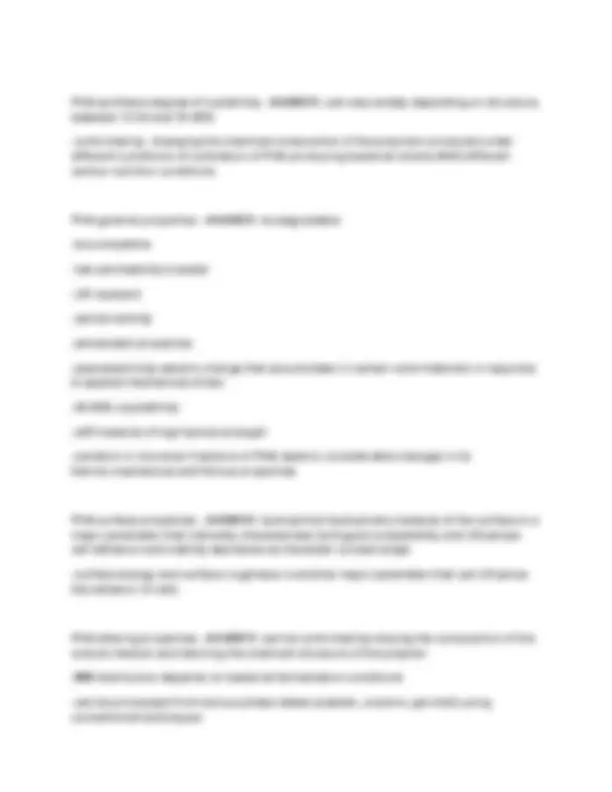
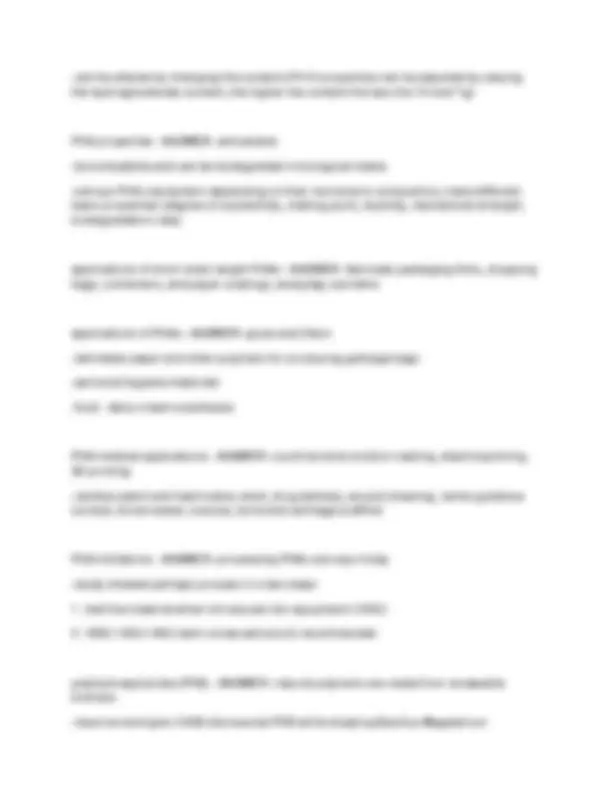
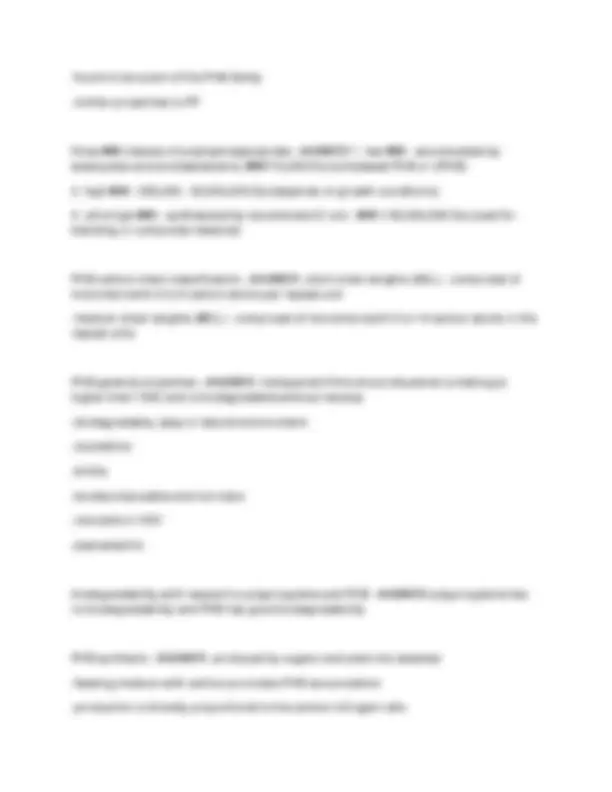

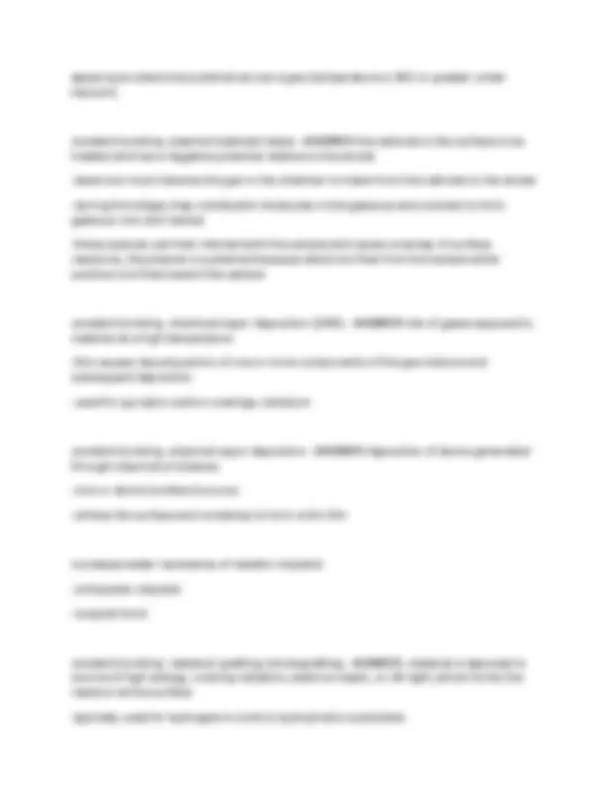
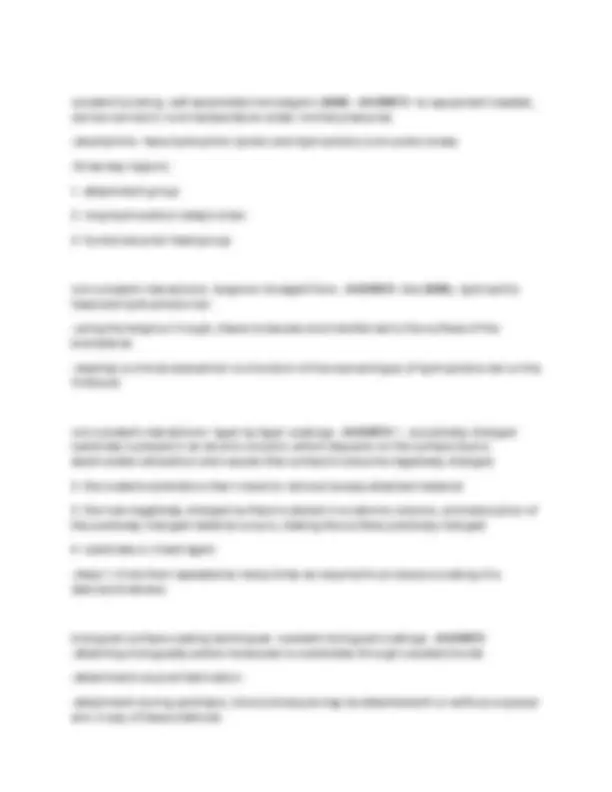
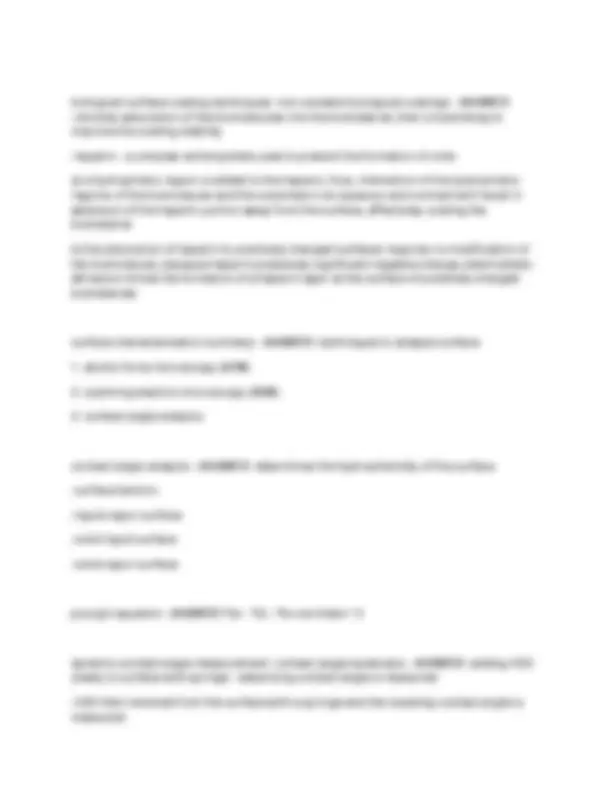
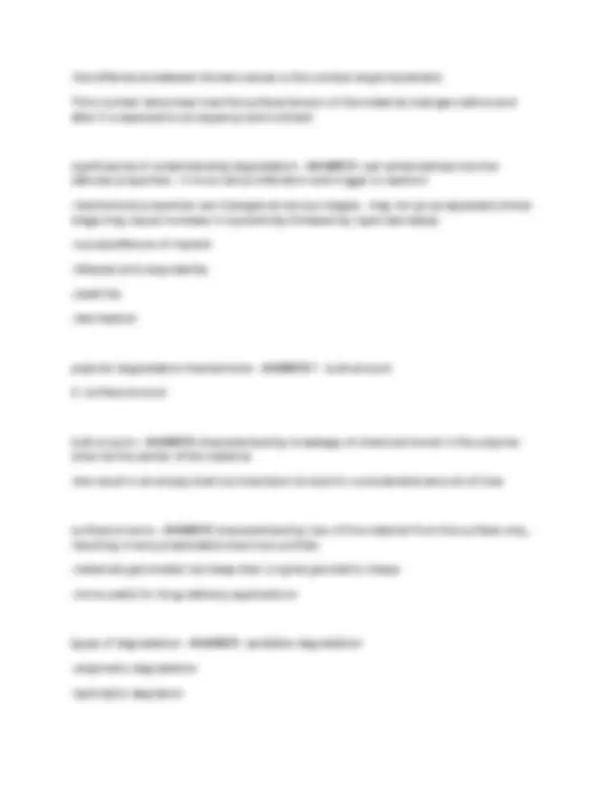
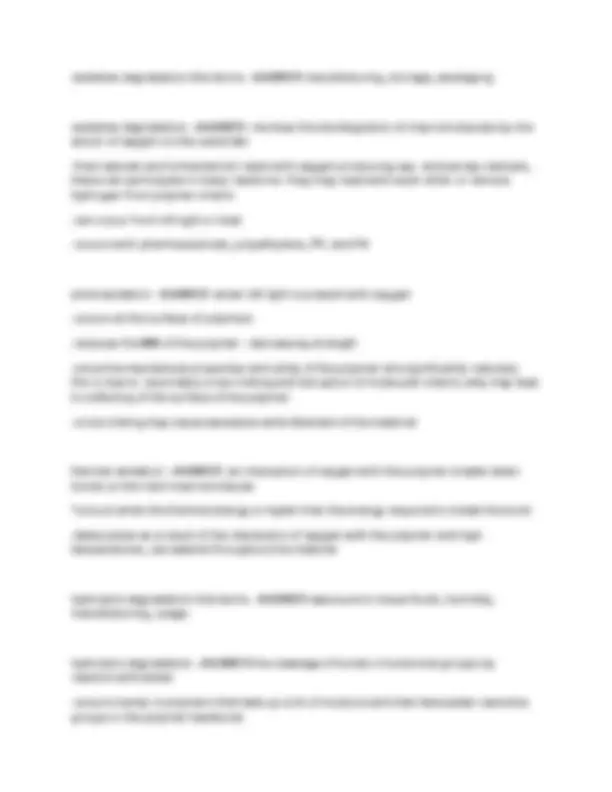
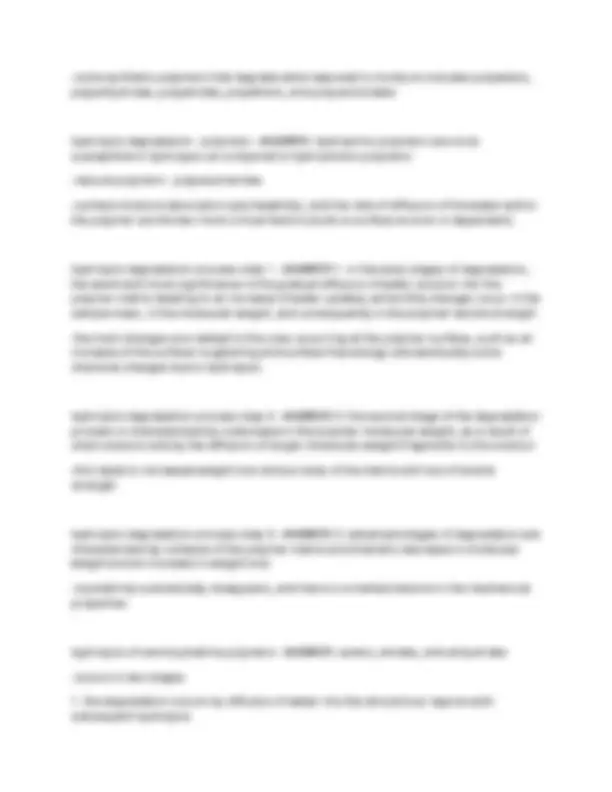
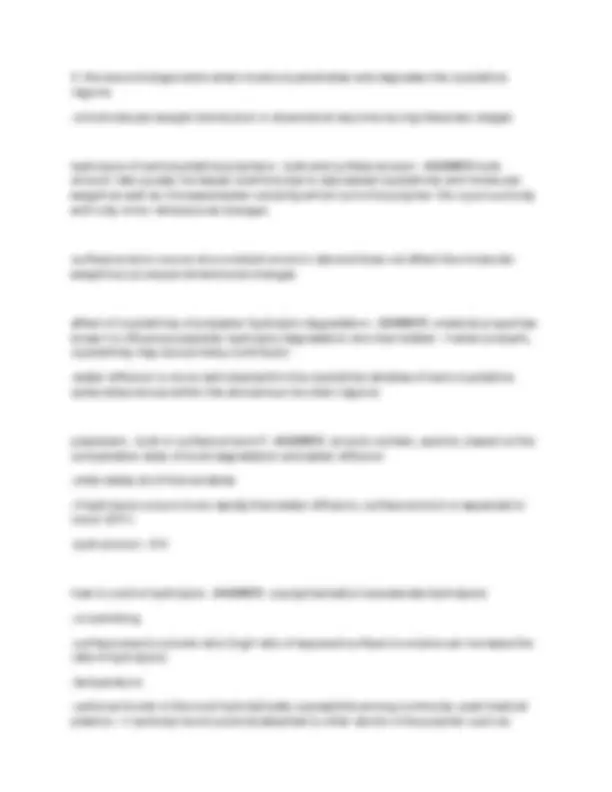
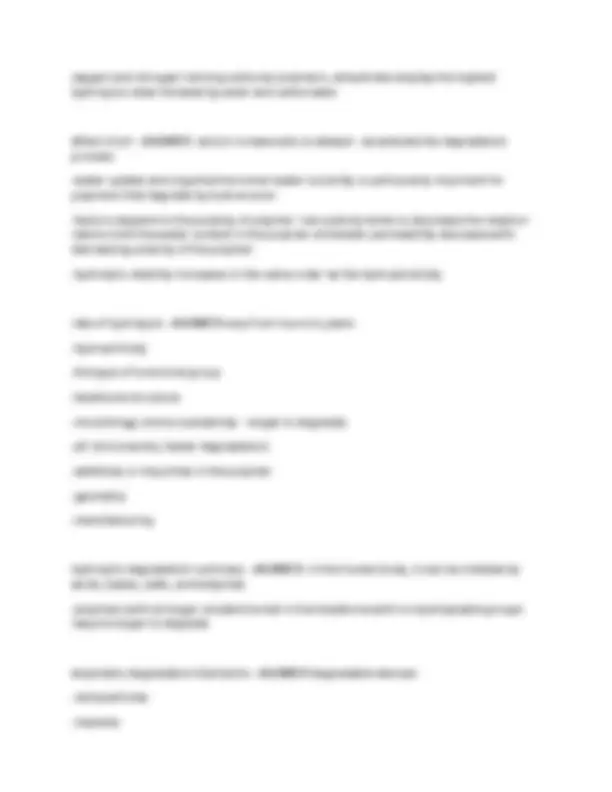
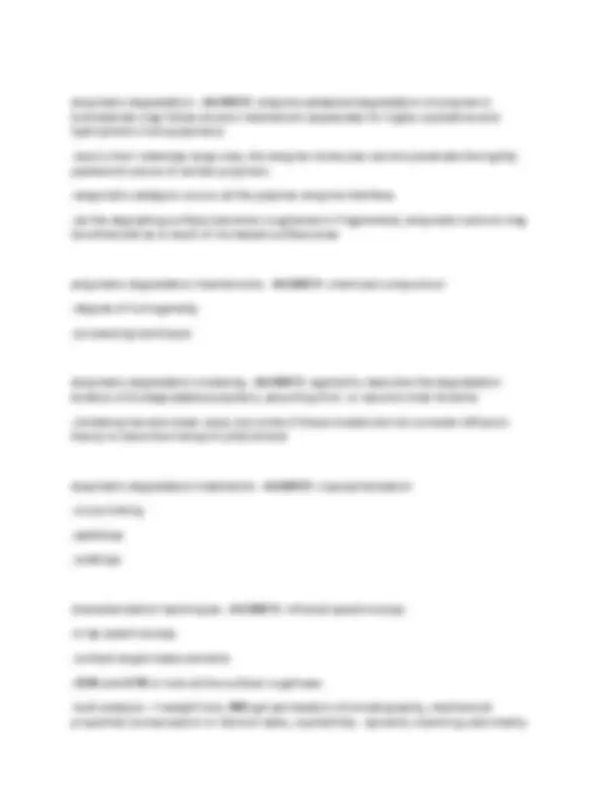
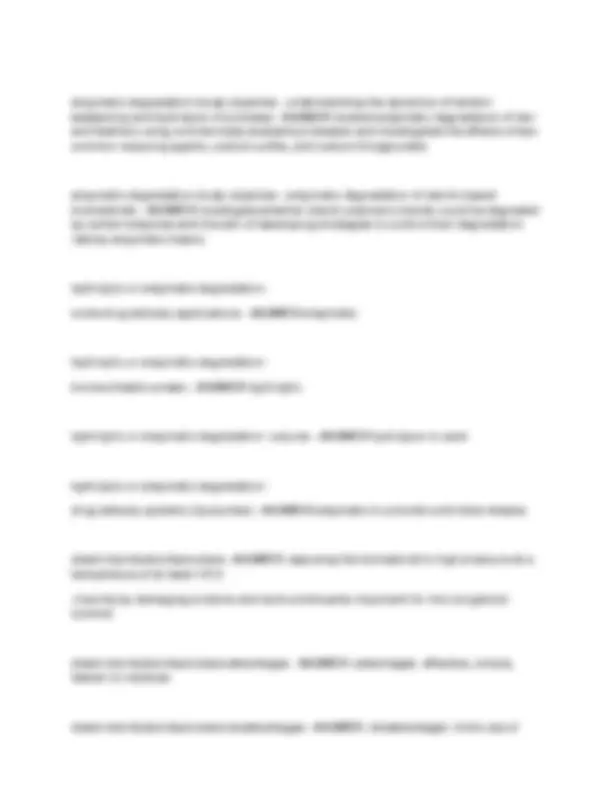
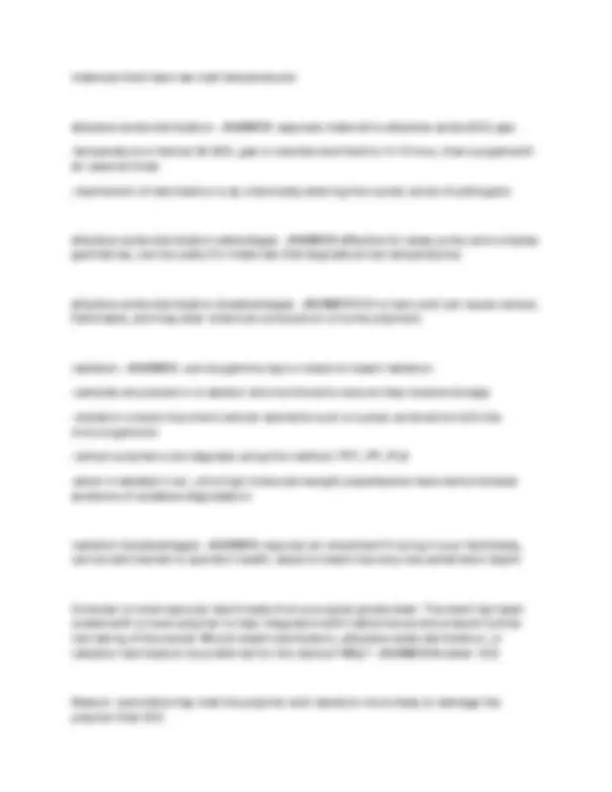
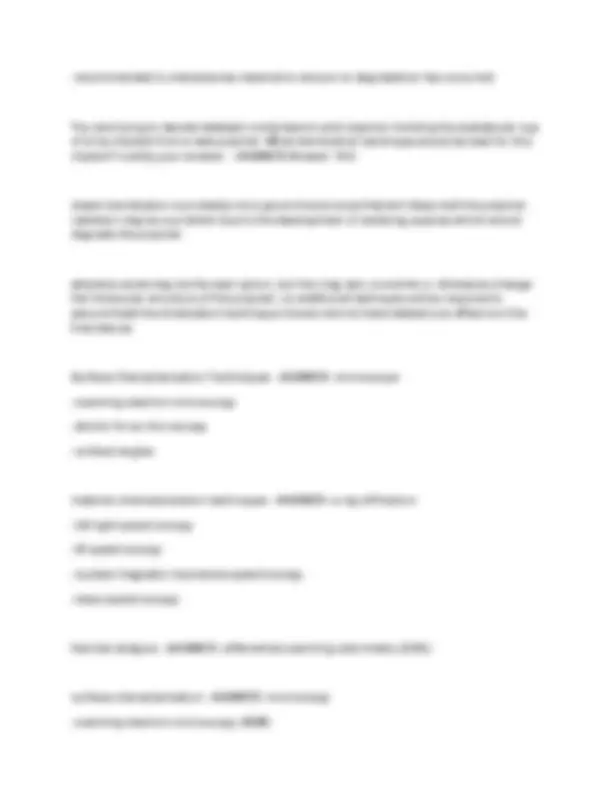
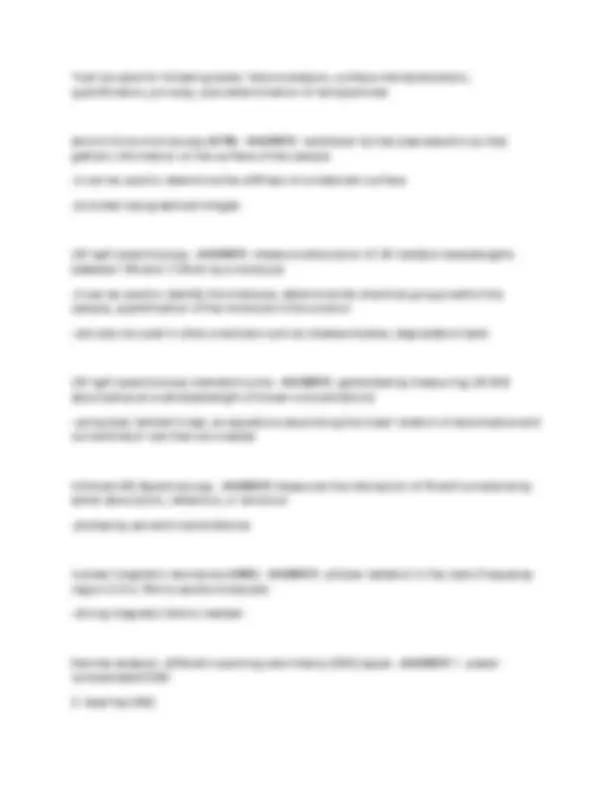



Study with the several resources on Docsity

Earn points by helping other students or get them with a premium plan


Prepare for your exams
Study with the several resources on Docsity

Earn points to download
Earn points by helping other students or get them with a premium plan
Community
Ask the community for help and clear up your study doubts
Discover the best universities in your country according to Docsity users
Free resources
Download our free guides on studying techniques, anxiety management strategies, and thesis advice from Docsity tutors
A comprehensive overview of hyaluronic acid, extracellular matrix, collagen, and keratin, focusing on their properties, functions, and biomedical applications. It includes detailed explanations of their chemical structures, biological roles, and degradative properties. The document also explores the use of these biomaterials in tissue engineering, wound healing, and drug delivery systems. It further delves into the limitations and challenges associated with their use in biomedical applications.
Typology: Exams
1 / 32

This page cannot be seen from the preview
Don't miss anything!

























hyaluronic acid (HA) - ANSWER -discovered in 1934 -long, unbranched polysaccharide chain, composed of twin sugar units -belongs to the same class of compounds as starch and cellulose -the substance is found naturally in the extracellular matrix of skin, cartilage, vitreous humor, and other body tissue -plays a role in movement and proliferation of cells
hyaluronic acid continued - ANSWER -a carbohydrate naturally occurring in all organisms -when not bound to molecules it binds to water giving it a more viscous consistency similar to jello
biological functions of hyaluronic acid - ANSWER joint synovial, vitreous fluid, control of tissue hydration, and water transport
hyaluronic acid function - ANSWER to bind water and to lubricate movable parts of the body such as joints and muscles
significant amounts of HA are also found in the lung, kidneys, brain, and muscle tissue
hyaluronic acid properties - ANSWER -high density of negative charges -causes hydrophilic properties -hygroscopic -high viscosity -has high capability of lubrication, water sorption, and water retention allowing the migration, adhesion, and proliferation of cells to function
hyaluronic acid molecular weight - ANSWER -is a high molecular weight glycol amino glycosaminoglycan composed of disaccharide repeats of N-acetylglucosamine and glucuronic acid -in the body HA occurs in the salt form (hyaluronate) which is found in high concentrations in several soft connective tissues including skin, the umbilical cord, synovial fluid, and vitreous humor
hyaluronic acid degradation - ANSWER -degrades by many naturally occurring enzymes such as hyaluronidase -degrade enzymatically and when they do, they release products that exhibit proangiogenic properties
applications of HA at MW 10-20 kDa - ANSWER resembles and act as toll like receptors
applications of HA at MW 50 kDa - ANSWER optimal molecular weight for effective moisturizing activity
applications of HA at MW 300 kDa - ANSWER anti-atropic and anti-aging activity
applications of HA at MW 500 kDa - ANSWER immunomodulatory activity
applications of HA at MW 1500-1700 kDa - ANSWER adjuvant theraphy in rheumatoid arthritis
HA cosmetic applications - ANSWER -bioavailability of HA differs depending on molecular weight -study compares the effects of ingesting HA at two molecular weights, 2k and 200k along with placebo -study was used to compare wrinkle volume ratio
-growth factors, cytokines, enzymes, and their inhibitors -fibronectin and laminins
contents of extracellular matrix - ANSWER -a meshwork of proteins and carbohydrates -found in most animal cells -major component is the protein collagen -directly connected to the cells it surrounds -plays a significant role in cellular communication and function (ex. blood clotting)
extracellular matrix general properties - ANSWER -provides structural and biochemical support to surrounding cells; scaffolding -rigid, dense, porous, insoluble - contributes to the mechanical properties of tissues -reservoir of growth factors and bioactive molecules -biodegradable -biocompatible -determines and controls fundamental behaviors and characteristics of cells (proliferation, adhesion, migration, polarity, differentiation, apoptosis)
biomedical applications - ANSWER tissue repair, organ transplantation, regeneration - decellularization
decellularization - ANSWER the extracellular matrix is located from its native cells and genetic material in order to produce a natural scaffold
decellularized ECM (dECM) - ANSWER -can be easily obtained from tissues/organs of various species -mimics the structure and composition of the native extracellular matrix, providing a favorable cellular environment -remove cellular elements such as cell membrane, nucleic acids, and mitochondria as much as possible, but keep the functional compositions
immersion in decellularization agents - ANSWER decellularization --> crosslinking --> sterization --> perservation
the cross linking step is key to - ANSWER improve mechanical properties after decellularization
other applications - ANSWER -therapeutic drug delivery -modeling - developing in vivo models that can provide information regarding pathways
altering properties - ANSWER -synthesis or degradation of one or more ECM components -varying the degree of cross linking -solubilized from decellularized samples -detergents
ECM degradative properties - ANSWER -breakdown by proteases -matrix metalloproteinases are the main enzymes involved
ECM limitations - ANSWER -progression of cancer -decellularized methods far from satisfactory -issue on how to retain active ingredients and structure in the initial preparation
collagen - ANSWER -most abundant protein of animal origin -makes up almost 30% of the total protein in the human body -main structural protein found in connective tissue (ligaments, tendons, cartilage)
collagen in the skin - ANSWER -provides skin with support and strength (we produce less each year causing aging effects on our skin)
-heat induced hydrolysis forms gelatin -can be altered to films, gels, powders, sponges
collagen limitations - ANSWER -difficulty of assuring adequate supplies -collagen suture's increased infection rates and inflammation (ineffectiveness in management of Infected sites) -hydrophilicity which leads to swelling and more rapid release -very expensive
electrospinning of collagen nanofibers: effects on the behavior of normal human keratinocytes and early-stage wound healing - ANSWER objective: develop a nanofibrous matrix composed of type I collagen seeded with keratinocytes via electrospinning
study findings - ANSWER -8% collagen was the ideal weight of nanofibers -crosslinking the nanofibers produced a stronger and denser matrix, whereas the non-crosslinked fibers were more porous
study conclusions - ANSWER -electrospinning of a collagen to make a biomimetic nano-fibrous for tissue engineering -showed good strength, even in aqueous solution -effective as wound-healing accelerators in early-stage wound heaaling -cross-linked collagen nano fibers coated with ECM proteins, type I collagen would be a good candidate for biomedical applications like wound dressing
keratin - ANSWER -major components of hair, feathers, wool, and horns -secondary structure -fibrous structural protein - made up of amino acids that form a repeating structure -primarily contains carbon, oxygen, nitrogen, hydrogen, and sulphur
keratin continued - ANSWER -fibrous structural protein found in animal cells and used to form specialized tissues -protects epithelial cells and strengths certain organs -plays a key role in wound healing -most abundant structural protein
keratin general properties - ANSWER -biodegradable -biocompatible -insoluble in water -can absorb heavy metal ions -high stability -can absorb formaldehyde -high toughness and high modulus
keratin biomedical applications - ANSWER -water purification and air cleansing -wound healing -bone regeneration -hemostasis -nerve repair
keratin degradative properties - ANSWER -enzymatic -demonstrates oxidation -breaks down disulfide bonds, proteolysis
keratin altering properties - ANSWER -can be purified and incorporated into dressings topical creams -can be easily rehydrated -cross-linking
-silk produced 3 chain types: protein, heavy and light -structure: 43% glycine, 30% alanine, 12% serine -heavy: 12 domains, formed from beta sheets, less organized, non-crystalline
B. Mori Silkworm processing - ANSWER gas forming (develop scaffolds), salt leaching, electrospinning, electro spraying
B. Mori Silkworm limitations - ANSWER -very difficult to produce large quantities -producing large quantities of spiders were not very successful due to their cannibalistic nature
B. Mori Silkworm degradation - ANSWER -ideally you want your rate to be compatible with new tissue formation to allow to deposit new ECM and referable functional tissue -solvent processed silk tend to degrade slow than aqueous based -silk degrades by the action of proteases (cross linking lower rates of enzymatic degradation) -films degrade faster than fibers -controlled by varying ratio of monomer -altering MW and crystallization
applications of silk - ANSWER -scaffolds produced with electrospinning -in vitro study, showed the precoating silk nanofibrous mats with fibronectin showed endothelization, skin, and bone repair potential -in vivo study showed promise for skin regeneration -used in food, cosmetics, and sutures
plastics impact - ANSWER -the toxic chemical additives and pollutants found in plastics threaten human health on a global scale -scientifically-proven health effects include causing cancer or changing hormone activity which can lead to reproductive, growth, and cognitive impairment
thermoplastics - ANSWER -make up about 75% of worldwide plastic production -trillion plastic bags consumed world wide with less than 1% being recycled -MW range is 20,000 to 500,000 daltons -most polymers have C and H's and are composed of repeated units with backbones of O,N,C,S
amorphous thermoplastics - ANSWER ps, pmma, all thermosets
semi-crystalline thermoplastics - ANSWER pe, pp, pvc, nylons, polyesters
thermoplastic removal - ANSWER -pvc being incinerated can cause harmful emissions -during the incineration of pvc, up to 2mg/g of phosgene is generation (one of the most dangerous gases) -phosgene - organic compound, colorless, a asphyxiant gas, strong poison (weapon during wwi)
how do we reduce plastic waste - ANSWER -recycling efforts -reduction in use -developing new materials that can degrade
polyester - ANSWER a polymer that contain the ester functional group in the repeat unit of their main chain
polyhydroxylalkanoate (PHA) - ANSWER -polyesters produced by direct fermentation -synthesized from feedstocks such as saccharides, organic acids, alcohols, mixtures of co2 and h2, products of plant biomass hydrolysis,... -constitute a family of polymers of various chemical structures, consisting of monomers between 3 and 12 or more carbon units
PHA synthesis degree of crytallinity - ANSWER -can vary widely depending on structure, between 10-20 and 70-80% -controlled by: changing the chemical composition of the polymers produced under different conditions of cultivation of PHA-producing bacterial strains AND different carbon nutrition conditions
PHA general properties - ANSWER -biodegradable -biocompatible -low permeability to water -UV resistant -optical activity -antioxidant properties -piezoelectricity-electric charge that accumulates in certain solid materials in response to applied mechanical stress -60-80% crystallinity -stiff material of high tensile strength -variation in monomer fractions of PHA leads to considerable changes in its thermo-mechanical and fibrous properties
PHA surface properties - ANSWER -hydrophilic/ hydrophobic balance of the surface is a major parameter that indirectly characterizes biological compatibility and influences cell adhesion and viability expresses as the water contact angle -surface energy and surface roughness is another major parameter that can influence the behavior of cells
PHA altering properties - ANSWER -can be controlled by varying the composition of the culture medium and tailoring the chemical structure of the polymer -MW distribution depends on bacterial fermentation conditions -can be processed from various phase states (powder, solution, gel melt) using conventional techniques
-can be altered by changing the content (PH13 properties can be adjusted by varying the hydroxylvalerate content, the higher the content the less the Tm and Tg)
PHA properties - ANSWER -antioxidant -biocompatible and can be biodegraded in biological media -various PHA copolymers depending on their monomeric composition, have different basic properties (degree of crystallinity, melting point, ductility, mechanical strength, biodegradation rate)
applications of short chain length PHAs - ANSWER -fabricate packaging films, shopping bags, containers, and paper coatings, everyday use items
applications of PHAs - ANSWER -glues and fillers -laminates paper and other polymers for producing garbage bags -personal hygiene materials -food - dairy cream substitutes
PHA medical applications - ANSWER -could be done solution casting, electrospinning, 3D printing -cardiac patch and heart valve, stent, drug delivery, wound dressing, nerve guidance conduit, blood vessel, sutures, bone and cartilage scaffold
PHA limitations - ANSWER -processing PHAs are very tricky -study showed perhaps process it in two steps
polyhydroxybutrate (PHB) - ANSWER -natural polymers are made from renewable biomass -maurice lemoigne (1925) discovered PHB while studying Bacillus Megaterium
-the bacteria use various C4 and C5 sources to produce polymer -the carbon used in the fermentation process accounts for 50% of the cost
three enzymes involved in the biosynthesis of the PHB - ANSWER 1. B-ketothiolase - catalyzes the first step
PHB synthesis steps - ANSWER -microbial synthesis of PHB starts with the condensation of two molecules of acetyl-CoA to give acetoacetyl-CoA which is subsequently reduced to hydroxybutyryl-CoA -this latter compound is then used as a monomer to polymerize PHB
isolation and purification of PHB - ANSWER solvent extraction: -PHB is soluble in organic solvents -chloroform, dichloroethane, trichloroethane, ethylene, acetone are used for isolation and purification of PHB without denaturing and lowering the MW -very expensive step
enzymatic extraction: -use lysozymes and DNA to solubilize the peptidoglycans and the nucleic acids
PHB applications - ANSWER 1. packaging -blow modeled bottles, disposable items
limitations of PHB - ANSWER -high production cost
-trying to be reduced by developing efficient bacterial strains and optimizing fermentation and recovery processes -processing: -PHB + chloroform at 50C are solvent cast to make films -Tm = 180C processing temps around 190C -extrusion - issues with shearing may occur
limitations and properties of PHB - ANSWER -semi-crystalline thermoplastic produced from microorganisms by fermentation of renewable carbohydrate feedstocks -relatively high melting point of about 160 to 180C and is difficult to process due to its narrow processing window -to improve its processability and mechanical properties, PHB is often blended with plasticizers and other polymers
PHB study objective - ANSWER to isolate PHB producing bacteria and study its PHB production from agricultural waste materials
PHB study conclusion - ANSWER confirmed that cheaply available agro-residues can be used for the production of PHB serving triple purposes of reducing the post of biodegradable plastics
surface tension - ANSWER excess energy caused by regions or atoms at the surface not bonded; unfilled valence shells
adsorption - ANSWER adhesion of molecules to a solid surface
absorption - ANSWER penetration of molecules into the bulk of another material (water absorbed into a sponge)
biocompatibility - ANSWER controlling protein adsorption to the surface of biomaterial
applying an electrical potential across a gas (temperature is 25C or greater under vacuum)
covalent bonding: plasma treatment steps - ANSWER the cathode is the surface to be treated and has a negative potential relative to the anode -electrons must traverse the gas in the chamber to travel from the cathode to the anode -during this stage, they collide with molecules in the gaseous environment to form gaseous ions and radical -these species can then interact with the sample and cause a variety of surface reactions, the plasma is sustained because electrons flow from the sample while positive ions flow toward the sample
covalent bonding: chemical vapor deposition (CVD) - ANSWER mix of gases exposed to material at a high temperature -this causes decomposition of one or more components of the gas mixture and subsequent deposition -used for pyrolytic carbon coatings, tantalum
covalent bonding: physical vapor deposition - ANSWER deposition of atoms generated through physical processes -ions or atoms bombard source -strikes the surface and condense to form a thin film
increases water resistance of metallic Implants -orthopedic implants -surgical tools
covalent bonding: radiation grafting / photografting - ANSWER -material is exposed to source of high energy, ionizing radiation, electron beam, or UV light, which forms the reaction at the surface -typically used for hydrogels to bind to hydrophobic substrates
covalent bonding: self-assembled monolayers (SAM) - ANSWER -no equipment needed, can be carried in room temperature under normal pressures -amphiphilic- have hydrophilic (polar) and hydrophobic (non-polar) areas -three key regions:
non-covalent interactions: langmuir-blodgett films - ANSWER -like SAMs, hydrophilic head and hydrophobic tail -using the langmuir trough, these molecules are transferred to the surface of the biomaterial -reaches a critical area which is a function of the size and type of hydrophobic tail on the molecule
non-covalent interactions: layer by layer coatings - ANSWER 1. a positively charged substrate is placed in an anionic solution, which deposits on the surface due to electrostatic attracttion and causes tthe surface to become negatively charged
biological surface coating techniques: covalent biological coatings - ANSWER -attaching biologically active molecules to substrates through covalent bonds -attachment via post-fabrication -attachment during synthesis, the biomolecule may be attached with or without a spacer arm in any of these methods